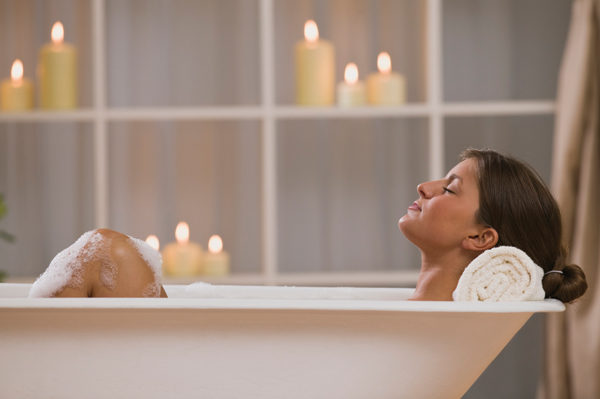We all need to treat ourselves from time to time. Some people do it with chocolate; others with a shopping trip. But, many crave a trip to the spa, where they can relax and rejuvenate in the lap of luxury.
The problem is that such indulgence comes at a cost—often $100 or more for an hour-long service. And, the chemicals that cosmeticians coat on the skin and hair in the name of beauty may turn off natural and organic shoppers. Retailers can take advantage of the need for affordable at-home spa products by offering excellent, natural options in their stores and teaching shoppers how such products can fit into their wellness routines.
At-Home Spa versus Everyday Skincare
Step by step. One key difference between spa and everyday personal care products is that spa products are less about getting the job done fast and more about “the experience.” Part of this experience is leisurely pampering, so products often are used in a multistep process that takes some time. According to Autumn Blum, organic cosmetic chemist, founder and vice president of Organix-South, Bowling Green, FL, and Trinity Ava, herbalist and Organix-South director of education, “Spa protocols are often intended to slow us down so that we can unwind and nourish our bodies/minds as we pamper, heal and love our body. Taking time for home-spa rituals can be an integral part of reducing stress and slowing the symptoms of aging.”
Ava, herbalist and Organix-South director of education, “Spa protocols are often intended to slow us down so that we can unwind and nourish our bodies/minds as we pamper, heal and love our body. Taking time for home-spa rituals can be an integral part of reducing stress and slowing the symptoms of aging.”
For instance, a spa facial may include cleansing, exfoliating with a scrub, using a facial mask and gentle massaging with a moisturizer.
Linda K. Upton, president of Borlind of Germany, Inc., New London, NH, says retailers can emphasize these steps in their stores by creating a menu of spa options with suggestions for corresponding product names, and descriptions of what the store carries. Offering choices can be empowering, as it lets shoppers design a customized skincare program with your guidance. “Customers select as many or as few options as they want so they stay within budget,” says Upton, pointing out it gives shoppers ideas for future purchases.
She says such a flyer could include:
• Preparing the skin
1. Cleansing (listing products that purify, calm or hydrate the skin)
2. Exfoliating (including products like scrubs)
3. Pore care (such as products intended for deep cleaning)
• Facial masks (pointing out options for hydration, anti-aging, purifying, calming and strengthening)
• Massage and moisturizing (including creams and lotions that replenish moisture, firm the skin, support the eye area and rejuvenate)
• Finishing touches (listing the makeup and fragrances you carry)
Kristine Carey, vice president of marketing for MyChelle Dermaceuticals, Louisville, CO, says it’s some of those extras like a mask, peel or serums that can help make the experience special. Serums, for instance, can be used everyday to target a specific skincare need or after a weekly treatment. “For example, you would have a serum for age defense, something to help you increase the collagen and the elastic in the skin…or a serum that helps with redness,” she explains. “Serums have a higher percentage of the ingredients than, let’s say, your cleanser.” She adds that serums can be layered. “A lot of people get confused about serums and want to know, ‘Why should I use them?’” says Carey. “It’s really about putting them on…for a very targeted reason.”
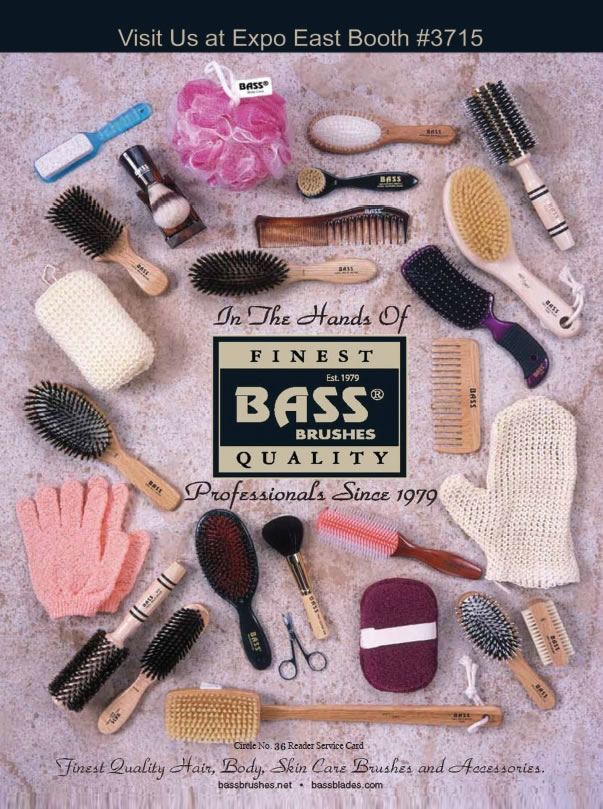 Kimberly Grustas, founder/owner of Good For You Girls, LLC, New Hartford, CT, makes the excellent point that teens and tweens love spa protocols, too. She says that spa parties thrown by moms are increasingly popular for this demographic, and have developed a teen-inspired protocol because of demand. This would entail:
Kimberly Grustas, founder/owner of Good For You Girls, LLC, New Hartford, CT, makes the excellent point that teens and tweens love spa protocols, too. She says that spa parties thrown by moms are increasingly popular for this demographic, and have developed a teen-inspired protocol because of demand. This would entail:
1. Sit girls in a circle and have them put on a headband (which can be used as a party favor).
2. Wet each girl’s hands with a spray bottle.
3. Put a dime-sized amount of natural cleanser in their hands and have them wash their faces.
4. Warm a little water in a crockpot and fill with face towels. Have girls wash off cleanser with warm towels.
5. Pass out cotton squares, spray with natural toner and have girls wipe their faces.
6. Collect cotton squares and give each a dime-sized amount of moisturizer.
7. If desired, girls can soak their feet in water with the cleanser during the facial in preparation for pedicures.
You can even offer natural beauty days in your store. Hire cosmetologists to offer facial treatments with products from your store for a fee. Make sure he or she explains the benefits of the natural ingredients that are at work during each step of the process.
For instance, when exfoliating, Madaline Barris of Reviva Labs Inc., Haddonfield, NJ, recommends pomegranate and lactic acid because they are “gentle and especially effective in removing the surface dead cells.”
Other recommendations for good exfoliants are jojoba beads, says Upton, because they “gently exfoliate skin and melt in the process, so they do not abrade and actually soften and condition skin.” Kirsten Corcoran, founder and product manager of Larenim, Worthington, OH, is partial to bamboo stem, pineapple and papaya enzymes and sugar cane alpha-hydroxy-acids as exfoliants.
Or, for softening skin, stores and cosmetologists can speak of the benefits of sea buckthorn oil, which is rich in omega-7. States James Liu, general manager of SeabuckWonders, Chicago, IL, “Omega-7 is very rare to find naturally in a single plant and sea buckthorn happens to have the highest concentration. The fatty acids target the skin and help to restore, replenish, and revive skin keeping its users looking youthful naturally. It helps with scarring, wrinkles and acne.”
Liu adds that sea buckthorn oil targets the acid within skin that causes inflammation and irritation, helping the skin to secrete less of it. He says, “In this way, sea buckthorn not only keeps skin soft, but also clear. Although exfoliation may help on the surface to get rid of dirt and oil, sea buckthorn actually works from the inside out to promote clear skin. This is a much more reliable and sustainable way to treat blemishes and other skin problems.”
Other oils recommended for softening the skin come from Upton. She suggests macadamia nut oil, meadowfoam oil, squalane (from olive oil) and borage oil. Corcoran adds that argan oil “softens the skin wonderfully and is uniquely good for all skin types.” And Hugo and Debra Saavedra, founders of Hugo Naturals, Chatsworth, CA, say golden jojoba oil mimics the skin’s oils, thus it offers “lasting hydration and moisturizing effects.”
The sweet smell of luxury. While some shoppers turn to natural skincare items for fragrance-free choices, a great-smelling product is often a sought-out commodity in the spa market.
“The scent of one’s environment is instrumental in evoking an atmosphere or mood,” says Corcoran. “For instance, the aroma of essential oil of lavender is reputed to make one feel calm and essential oil of grapefruit is reported to make one feel happy. Retailers should first understand what specific properties each have and then guide their consumers accordingly.”
Add the Saavedras, “For us, aromatherapy is an essential part of creating a sensual and beneficial treatment/experience. Naturally produced essential oils and plant extracts provide not only sensory pleasure, but they also impart healing and restorative benefits that help make us feel and look better!”
Jane Merten, senior brand manager at Aura Cacia, Norway, IA, explains how aromatherapy works: “Because of their volatility and complex molecular nature, essential oils are easily absorbed directly into the body through the skin. Additionally, when inhaled, transmission of the aroma is sent to the limbic system, which triggers neurochemicals that interact directly with the brain and thus affect emotion.”
While retailers don’t necessarily need to understand all the complexities of aromatherapy, there are several key points with which they should be familiar in order to best help their clientele.
First, there’s a big difference between the way scents are naturally extracted from plants and how they are synthetically made in a lab. You can emphasize this point to shoppers. States Alexis Buntin, public relations and brand manager at Reserveage Organics, Gainesville, FL, “Each individual has different needs, but directing them to natural and organic options will help them achieve not only healthy skin, but also the rejuvenating experience that comes with skin care.”
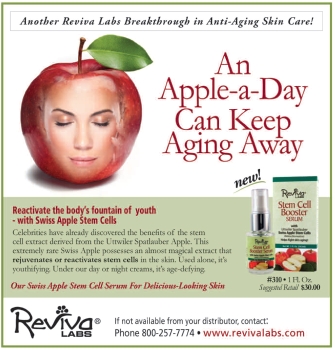 Natural extraction can occur in several ways, the primary of which is steam distillation. According to Merten, “Water is heated to boiling and its steam passes through fresh plant material. This causes the cell walls of the plant material to break down and release the essential oil. The water and essential oil vapor then pass through a cooler that condenses the steam and the oil into a liquid. The liquid is collected and the oil is separated from the water. Most oils are lighter than water and thus collect on the surface of the water where they are siphoned off. Oils heavier than water sink to the bottom of the collector where they are removed.”
Natural extraction can occur in several ways, the primary of which is steam distillation. According to Merten, “Water is heated to boiling and its steam passes through fresh plant material. This causes the cell walls of the plant material to break down and release the essential oil. The water and essential oil vapor then pass through a cooler that condenses the steam and the oil into a liquid. The liquid is collected and the oil is separated from the water. Most oils are lighter than water and thus collect on the surface of the water where they are siphoned off. Oils heavier than water sink to the bottom of the collector where they are removed.”
Suzanne Dean, vice president of Tea Tree Therapy, Inc., adds an example from her firm’s line: “Lemon myrtle and tea tree oil are steam distilled utilizing only water. 5,000 lbs of leaves in both yield approximately 35 lbs to 50 lbs of oil.”
Some botanicals like the peels of limes, lemons, oranges and grapefruits are cold-pressed to extract essential oils. “Expressed oils contain the essential oils along with a tiny amount of part of the fruit such as colorants and waxes from the fruit. These particles are filtered out,” says Merten.
Merten also makes the distinction that absolute oils are made from botanicals like rose and jasmine using solvent extraction. Once the solvent removes the essential oils from the plants, the matter is washed with alcohol to separate out the solvent. “This method is used when the heat of distillation would damage delicate oils or when the quantity of oil in the plant is so low that distillation would not be an effective method of extraction,” Marten explains.
A newer technique is extraction using carbon dioxide under high pressure. While it’s an expensive, complicated technique, Merten says the method requires low temperature so the scents are very true to the plant. According to Blum and Ava, Organix-South uses supercritical carbon dioxide extraction for its personal care products. “These extracts are environmentally friendly, solvent free and are super concentrated and highly prized for their therapeutic benefits and aromas,” they say.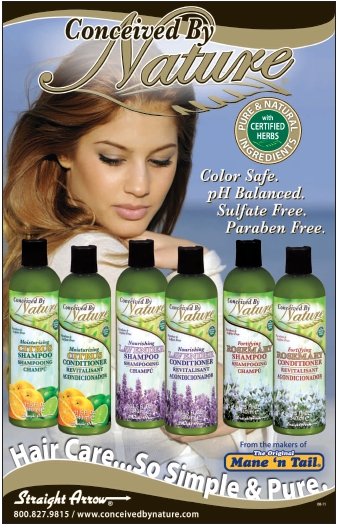
Retailers can stress that many mainstream companies in the spa industry aren’t as environmentally conscious with their extraction methods. Say Blum and Ava, “It is common to use synthetic fragrances even with aromas such as lavender as they are less expensive to use compared to using pure essential oils or supercritical extracts. Synthetic or synthesized aromas that are created in a lab are considered quite controversial for their effects on our health and the health of the environment; they also lack the therapeutic properties and medicine of an essential oil or supercritical extract.”
The Saavedras agree that only truly natural scents will preserve “the integrity of the plant’s natural benefits.”
But, there’s more to a great spa product than just its smell. “Consumers are not only attracted by the scent, but also by the efficacy of the product,” states Dean. She adds that the product must feel good and promote wellness, but not have a medical smell. Popular scents among her company’s customers include lemon myrtle, lavender, Eucalyptus radiata and tea tree oil.
Lavender, says Merten, is one of the most popular scents on the market. “Not only is it calming and soothing, but it also is the safest to use and very affordable.” Other top-selling scents from her firm include peppermint, eucalyptus, tea tree, sweet orange, rosemary, clove bud, geranium, lemon, rose and jasmine.
And to this list, Corcoran adds vanilla and grapefruit. And luxurious scents like rose and sandalwood are hot, too, say Blum and Ava.
Also popular are blends of essential oils. Blum and Ava believe a good synergy of essential oils occurs when “the harmony of the ‘notes’ of each essential oil used in the formula creates a multifaceted and multidimensional aroma.” Such aroma layers, they say, encourage users to want to smell it over and over again. They say, “The idea of multifaceted herbal formulations is well supported by many systems of traditional herbal medicine. The rationale behind this system is that when we use multi-herb formulas, we create an orchestra of aroma or herbal dietary supplements that will tune the orchestra of our body with many harmonies.” They recommend Aromatherapy a Complete Guide to the Healing Art, by Mindy Green and Kathi Keville as a good resource.
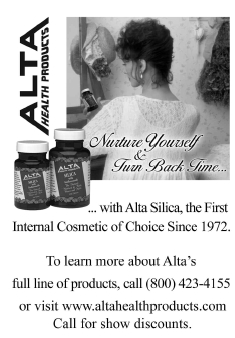 According to Grustas, the aroma of a product is especially important to teen clientele. “Compliance, when you’re talking about young girls, is key,” she says. “This is one of the main reasons we started our company.” Grustas explains that at the time, she and Good For You Girls cofounder Grace Hvasta-Petrarca went looking for natural skincare for Grace’s then 11-year-old daughter. What they found were a lot of tea tree oils, which have a strong scent that may not appeal to some teens, Grustas felt. “Compliance for these products is really the kicker,” she says, noting that her firm’s product line is scented like citrus from a blend of essential oils to help make the experience as pleasurable as possible. Some teens, however, love tea tree oil, so stock a healthy variety of products.
According to Grustas, the aroma of a product is especially important to teen clientele. “Compliance, when you’re talking about young girls, is key,” she says. “This is one of the main reasons we started our company.” Grustas explains that at the time, she and Good For You Girls cofounder Grace Hvasta-Petrarca went looking for natural skincare for Grace’s then 11-year-old daughter. What they found were a lot of tea tree oils, which have a strong scent that may not appeal to some teens, Grustas felt. “Compliance for these products is really the kicker,” she says, noting that her firm’s product line is scented like citrus from a blend of essential oils to help make the experience as pleasurable as possible. Some teens, however, love tea tree oil, so stock a healthy variety of products.
A step above. Another distinguishing factor of spa products is that companies often design them to be more intensive than everyday products. Such lines, says Debbie Sellers, North American beauty sales manager for derma e Natural Bodycare, Simi Valley, CA, often incorporate “a more refined ingredient base with elevated levels of these active ingredients that are encapsulated in effective delivery systems.”
According to Dean, consumers expect that spa products will out-perform everyday products. “Consumers want to feel good and also know that the ingredients are exceptional and doing something for them without using synthetic ingredients on the skin,” she says.
Corcoran adds, “A spa product line is usually the brainchild of a person who is very passionate and fixated on bringing products to market that accomplish beauty goals above and beyond the  conventional…spa products traditionally emphasize ‘active ingredients’ that are derived from nature and/or have properties that are backed by clinical studies.”
conventional…spa products traditionally emphasize ‘active ingredients’ that are derived from nature and/or have properties that are backed by clinical studies.”
Teens fighting dry skin and pimples may be especially concerned with efficacy, but natural may fit the bill. “For us, when they use a natural product for the first time, they never feel as though it is second rate,” says Grustas. “They don’t have to sacrifice.”
Products with efficacy may be a great deal compared with a trip to the day spa, even though they may cost a bit more than an everyday skincare item. This brings us to our next point: cost.
The price of luxury. High-end products require a little extra buy-in from shoppers as they may cost a little more than products intended for a daily skincare regimen. But one selling point is that they are a bargain compared with what one would typically spend at a day spa. Buntin makes the point that such treatments are unaffordable to the average shopper. On the other hand, she says, “A quality skin care product line, such as ours, is affordable and accessible and can offer the customer the ability to become his or her own caregiver of treatments, so to speak.”
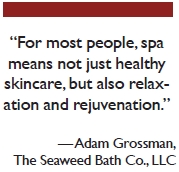 Upton says natural products stores can exploit this fact. She advises stores to post “cost per day” information about at-home spa products. “While spa products can be more expensive than mainstream products, they are generally more concentrated so a customer actually saves money in the long run by using them,” Upton says.
Upton says natural products stores can exploit this fact. She advises stores to post “cost per day” information about at-home spa products. “While spa products can be more expensive than mainstream products, they are generally more concentrated so a customer actually saves money in the long run by using them,” Upton says.
In fact, even during the recent economic downturn, many of the companies interviewed for this piece reported their products did very well. Say the Saavedras, “Consumers are willing to spend a little more on at-home, spa quality products while foregoing the expense of commercial spas. At Hugo Naturals, we are reaping the reward of the more-informed consumer who understands the real value of truly natural products.”
Nonetheless, retailers can use some clever merchandising to make spa products accessible to shoppers on a budget. Blum and Ava expand on the aforementioned product menu: label it as a “stay-cation” spa package. “It would be great for the retailers to highlight the cost of the ‘stay-cation’ spa treatment so the customers can appreciate the value of purchasing multiple products. Having demos at the store for home spa treatments that are cost effective like dry skin brushing, creating a perfect bath and DIY skin care are very affordable and beneficial,” they say.
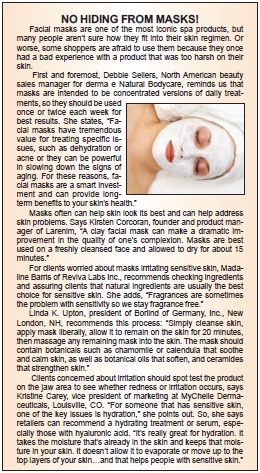 If you’re not sure how to put something like that together, personal care companies like Organix-South are ripe with ideas. Blum and Ava say they have such protocols for hair, skin and nails. You can also make suggestions for creating the spa atmosphere at home with candles, dim lights, soothing music and a refreshing glass of water infused with cucumber slices—all sans the cell phone and laptop!
If you’re not sure how to put something like that together, personal care companies like Organix-South are ripe with ideas. Blum and Ava say they have such protocols for hair, skin and nails. You can also make suggestions for creating the spa atmosphere at home with candles, dim lights, soothing music and a refreshing glass of water infused with cucumber slices—all sans the cell phone and laptop!
Companies also recommend consumer education for enticing shoppers to buy spa products. Sellers recommends “user-friendly collateral material and merchandisers that explain the products and their targeted benefits.”
And don’t forget to try some products yourself so you can talk knowledgably about your favorites.
Merchandising for Men
When making choices for which spa products to carry in your store, don’t make the mistake of assuming you should cater to just women. Men, too, may be interested in pampering with the right products.
“We have many male clients,” says Barris. “Men of today want to maintain their appearance as well as women.”
According to Sellers, guys love easy, low-maintenance products, but they also want quality. She states, “Recent data suggest that the male demographic is becoming more ingredient savvy, however an easy regimen will still conquer ingredients.”
Since shaving is tough on the skin, men can benefit from products that incorporate soothing ingredients. Says Buntin, “Men are often overlooked in the skin care market, even though their skin is brutalized with daily shaving and neglect, leaving their skin dry, fatigued and worn. Good quality skin care products that meet these needs fit well with any man’s skincare regimen.”
For instance, Organix-South’s Men’s Shaving and Body Soap has received “rave reviews for its ability to soothe and nourish the most sensitive of skin with neem,” say Blum and Ava. “Neem is well known for its cooling, soothing and astringent actions which are ideal for men and women. Our men’s care products are designed to address a man’s skin needs and are formulated with woodsy and refreshing aromas that tend to be more appealing to men.” Also on the market are scrubs intended to help those with in-grown hairs caused by shaving.
Adam Grossman of The Seaweed Bath Co., LLC, Austin TX, adds that dry skin is a problem for many men. “I know first-hand how difficult it can be to find spa and skincare products for men. Men need natural, healthful, effective products too. For me, it was very important to create all-natural products that were user-friendly and appeal to everyone.”
Therefore, The Seaweed Bath Co., LLC line offers products to soothe dry skin and scents were selected to appeal to both genders. Grossman also offers an example of Sellers’s point that men’s products should be easy to use. “Our body butters, which come in deodorant stick packaging, were specifically created with men in mind—men who may not want to get their hands oily when applying a regular lotion,” states Grossman.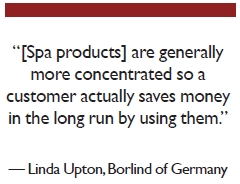
Making spa products appealing to male clientele, says Dean, is partly a matter of educating them about products. She offers some examples from her company’s line: “Always discuss an item; get them to try a lotion or smell the scent of soaps such as Tea Therapy Tea Tree Oil bar soap or Refreshed Lemon Myrtle exfoliating bar soap or liquid soaps.”
Placement is key, too. Blum and Ava recommend positioning men’s products on an end cap or near sports or men’s supplements, in case men don’t feel comfortable going into personal care aisles that are heavily stocked with women’s products. And, contact product manufacturers about helping you set up passive demonstrations such as with tester bottles and sample packs so men can try out and smell products before buying them. WF
Published in WholeFoods Magazine, September 2011

